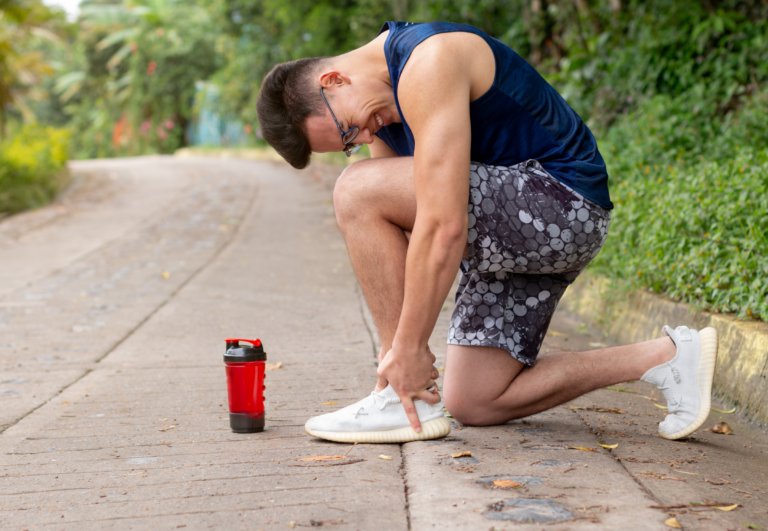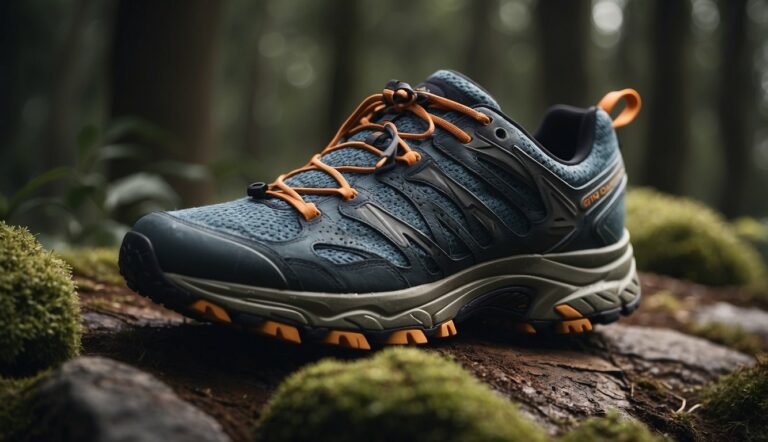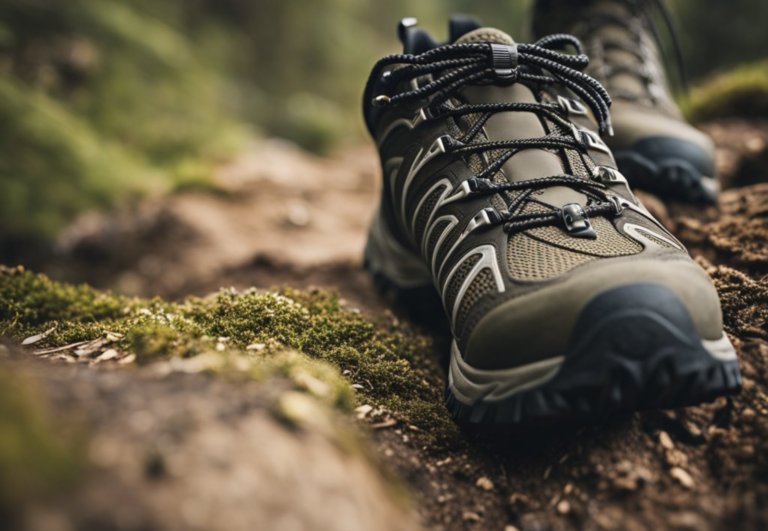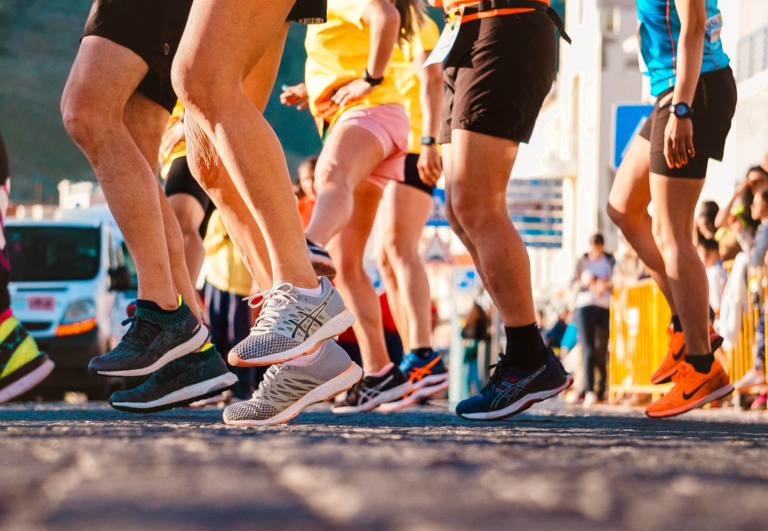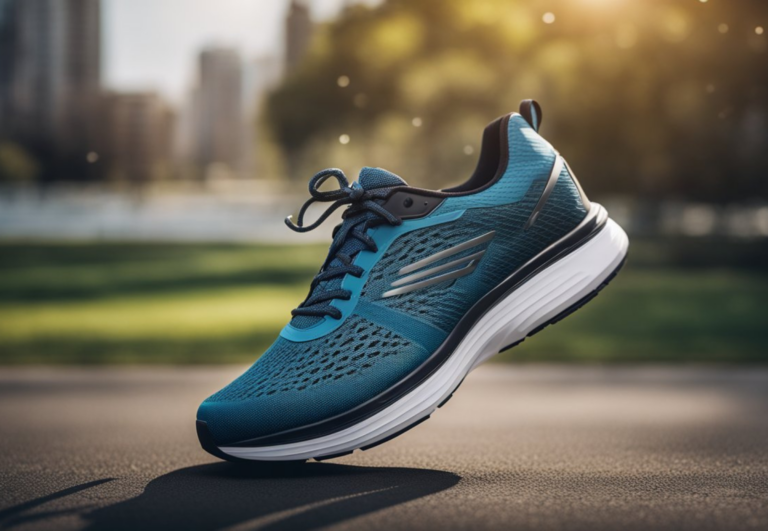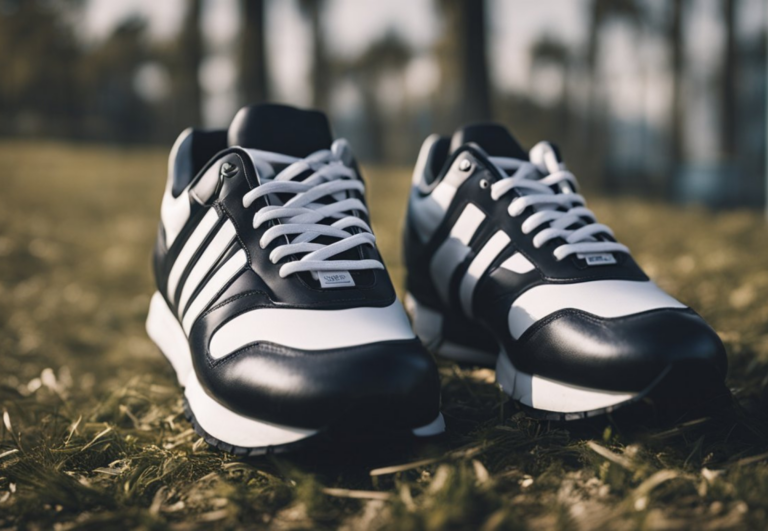When to Size Up or Down in Running Shoes: Finding Your Perfect Fit
When choosing the right running shoes, knowing when to size up or down is essential for optimal comfort and performance.
Size up running shoes if your toes are too close to the shoe’s end, if you have wide feet or bunions, wear thick socks, or run long distances that cause foot swelling. Size down running shoes if you experience heel slippage or too much room above the forefoot. Always consider factors like foot width, changes in foot structure, brand sizing differences, and whether you use orthotics or special insoles.
Remember to try on shoes later in the day and take them for a test run to ensure the best fit for your running needs.
When to Size Up or Size Down Your Running Shoes

When selecting your running shoes, the right fit is crucial for your comfort and performance.
When To Size Up
- Longest Toe: There should be about a thumb’s width between your longest toe and the end of the shoe. If your toe is grazing the front, size up.
- Bunions or Wide Feet: If you notice the sides of your feet overhang the edge of the insole or if you have bunions, consider wider shoes or sizing up for better comfort.
- Thick Running Socks: Your running socks can affect the fit. If you wear thick socks, they may require more room in the shoe.
- High Mileage: Runners who cover high mileage may experience feet swelling, necessitating a larger shoe by half a size.
When To Size Down
- Slipping Heel: If your heel slips while walking or running, a smaller size could provide a better lock-down.
- Forefoot Space: Excess material above the forefoot may indicate your shoes are too roomy; going down half a size can offer a snugger fit.
Remember, regardless of foot conditions like plantar fasciitis or stability requirements, there’s a shoe out there that will fit you well. Modifications like insoles may also help achieve the perfect fit.
Here’s a quick reference to track your shoe fitting issues:
| Issue | Possible Solution |
|---|---|
| Toe Touching Front | Size Up |
| Heel Slippage | Size Down |
| Tight on Top | Size Up or Wider Fit |
| Forefoot Pinching | Size Up |
Always try shoes later in the day when feet are at their largest, and take a test run or walk to gauge fit and comfort. Choose a shoe appropriate for your activities, with the necessary technologies for support and cushioning, to help prevent injury.
The Most Common Reasons To Go Up or Down a size in Running Shoes
The most common reasons for needing to go up or down a size in running shoes are related to the fit, comfort, and performance of the shoe on an individual’s foot. Here are some factors that might necessitate a size adjustment:
- Toe Room: Adequate space in the toe box is crucial. Your toes should have enough room to wiggle without touching the front of the shoe. During running, feet swell and lengthen, which can require going up a half or full size to accommodate this change.
- Width of the Foot: If a shoe is too narrow, it can cause blisters, calluses, and discomfort, indicating you might need a wider shoe or a larger size. Conversely, if a shoe is too wide, your foot may slide around, which could mean you need to go down a size or find a narrower fit.
- Foot Structure Changes: Feet can change in size and shape due to factors such as weight gain, pregnancy, or age. These changes can necessitate a different shoe size to maintain comfort and support.
- Different Brand Sizing: Running shoe sizes are not universal across different brands or even different models within the same brand. You may find yourself needing to go up or down a size when switching between brands due to their sizing idiosyncrasies.
- Orthotics or Insoles: If you wear orthotics or special insoles, you might need to go up a size to accommodate them comfortably within the shoe without restricting foot space.
- Running Terrain: Runners who frequent downhill terrain might choose a slightly larger size to prevent their toes from hitting the front of the shoe, which can lead to bruised toenails or other injuries.
- Heel Slippage: If your heel slips out of the back of the shoe while running, the shoe may be too big, and you may need to go down a size or find a shoe with a better-fitting heel counter.
- Personal Preference for Fit: Some runners prefer a snugger fit for racing and speed work, while others prefer a more generous fit for long-distance running. This preference can influence whether you decide to size up or down.
Adjusting Running Shoe Size for Terrain or Running Style
When selecting running shoes, consider the terrain. If you frequently run on uneven surfaces, shoes with a bit more space allow your feet to flex and grip naturally. On the other hand, a snug fit is vital for smooth, stable surfaces to ensure precise foot placement and stability.
Factors like downhill running require a slightly larger shoe to prevent your toes from hitting the front. Conversely, if you prefer running uphill, a tighter fit offers better control.
Here’s a quick guide:
Running Terrain vs. Shoe Fit
| Terrain Type | Shoe Fit Recommendation |
|---|---|
| Uneven Trails | Slightly Loose |
| Flat, Stable | Snug Fit |
| Downhill Sections | Slightly Larger |
| Uphill Sections | Tighter Fit |
Your running style also impacts shoe size. A minimalist running technique demands a closer fit to enhance the foot’s natural motion. For a heavier impact style, consider a little extra room to accommodate foot swelling.
Running Style vs. Shoe Fit
| Running Style | Shoe Fit Recommendation |
|---|---|
| Minimalist/Barefoot | Close Fit |
| Heavier Impact Running | Roomier Fit |
Remember, your foremost priority is comfort and injury prevention. Test different sizes to find the best match for your feet and running habits. It’s common for athletes to own several pairs of shoes suited for various running conditions.
Don’t hesitate to ask for advice at a specialty running store, where experienced runners can guide your selection based on specific needs.
Identifying a Poor Running Shoe Fit

When you’re choosing running shoes, comfort is critical, but it’s easy to mistake a tight sensation for a secure fit. A proper fit allows for some room between your toes and the shoe’s end. Your big toe shouldn’t graze the front of the shoe; ideally, there should be about a thumb’s width of space to avoid bruised toes.
Watch out for the width as well. Shoes that are too narrow can lead to discomfort and even bunions over time, while ones that are too wide may cause your foot to shift inside, leading to blisters. Consider your foot width and whether the sides of your pinky and big toe rub against the shoe.
Heel fit is another telltale sign: a snug, not tight, fit is what you’re aiming for. Your heel should stay in place as you move. If it slips, that’s a sign the shoe might be too big. On the flip side, if it’s pinching, it might be too small.
Lastly, remember your arches. They should feel supported in the shoe, with the sole contouring to their natural shape. If there’s too much pressure or not enough, the fit isn’t right and you should replace your shoes.
Here’s a quick checklist to keep in mind:
| Fit Aspect | Sign It’s Too Small | Sign It’s Too Large |
|---|---|---|
| Toes | Touching the front | Excessive space |
| Width | Side rub | Foot shifts |
| Heel | Pinching | Slipping |
| Arches | Too much pressure | Lack of support |
Get your feet measured regularly, as your size can change over time. And the best time to try on running shoes is in the afternoon or evening, when your feet are at their largest.
Benefits of a Correct Running Shoe Fit
A correct running shoe fit is vital for several reasons, providing both immediate and long-term benefits for runners:
- Injury Prevention: Shoes that fit well can reduce the risk of common running injuries. Ill-fitting shoes can lead to issues such as blisters, black toenails, plantar fasciitis, shin splints, and even knee, hip, and back pain due to improper alignment and support.
- Improved Comfort: A proper fit ensures comfort during runs, which can make the experience more enjoyable and help you run longer and more often without discomfort.
- Enhanced Performance: When your running shoes fit correctly, they work with your natural gait, improving your running efficiency. This can translate to better performance and potentially faster times.
- Better Support: A correct fit provides the necessary support where it’s needed most, particularly around the arch and heel of the foot, which can help maintain proper foot alignment and reduce strain on the feet and joints.
- Optimal Cushioning: Running shoes that fit properly allow the cushioning features of the shoe to function as intended, absorbing impact and reducing stress on the lower extremities.
- Increased Durability: When shoes fit correctly, they wear down more evenly, which can extend the life of the shoe and make your investment last longer.
- Prevention of Foot Conditions: Properly fitted shoes can help prevent the development of foot conditions such as bunions, hammertoes, and corns.
- Stability and Balance: A good fit helps maintain stability and balance, which is especially important when running on uneven surfaces or during quick directional changes.
- Temperature Regulation: Shoes that fit well can also help in regulating the temperature inside the shoe, providing enough room for air to circulate, keeping feet cooler in hot conditions, and retaining heat in cold conditions.
- Confidence in Your Stride: Knowing you’re wearing shoes that fit well can give you confidence in your stride, allowing you to focus on your running technique and training without worrying about your footwear.
For the best fit, it’s recommended to measure your feet and try on shoes in the afternoon or evening when feet are typically at their largest due to natural swelling. Always consider both the length and width of the shoe, and remember that sizing can vary between brands and even between different models within the same brand.
Other Things To Consider With Running Shoe Sizing

Ensuring your running shoes fit properly is crucial in providing comfort and avoiding common running-related injuries
Other than the size of the shoe itself, there are three other important aspects to consider:
- Running Socks
- Lacing Techniques
- Insoles or Orthotics
Running Socks
Socks play a significant role in the fit and comfort of running shoes, and they can indeed affect running shoe sizing:
- Thickness: The thickness of the socks you wear can change how your shoes fit. Thicker socks require more room inside the shoe, potentially making a normally well-fitting shoe feel tight and uncomfortable. Conversely, if you switch to thinner socks, your shoes may feel too loose, which can lead to slipping and blisters.
- Material: The material of the socks can also impact fit. Some materials, like cotton, can absorb sweat and swell, making the fit tighter over the course of a run. Moisture-wicking materials tend to maintain their size and shape better, keeping the fit consistent.
- Cushioning: Some running socks have additional cushioning in areas like the heel or ball of the foot, which can affect the volume inside the shoe and may necessitate a larger size for proper fit.
- Compression: Compression socks provide a tighter fit, which can affect the sizing of your shoes. While they are designed to improve circulation and stabilize the muscles, they can also make the shoe fit feel snugger.
- Fit Adjustment: Socks can also be used to fine-tune the fit of a shoe. If a shoe feels slightly large, a thicker sock might improve the fit, while a thinner sock might be better for a shoe that feels a bit snug.
Because socks have such an impact on the fit of running shoes, it’s important to try on new running shoes while wearing the type of socks you plan to run in. This helps ensure a proper fit and can prevent issues that arise from ill-fitting shoes.
Lacing Techniques
Proper lacing techniques also play a role in maximizing comfort.
Try alternate lacing methods if you feel pressure on the top of your foot or if you need a tighter fit around your ankles. Consider a heel lock lacing method for added ankle support.
| Lacing Technique | Description | Benefits |
|---|---|---|
| Standard | Criss-cross lacing from toe to top | Even pressure distribution |
| Wide Feet | Looser lacing at the midfoot, tighter near the top | Less pressure on the broad part of the foot |
| Narrow Feet | Tighter lacing along the entire shoe | Better foot support and reduced slippage |
| High Arches | Looser lacing at the bottom, tighter near the top | Comfort for high arches, better blood flow |
The Role of Insoles and Orthotics
Consider adding an insole or orthotic to your running shoes for further comfort and support, especially if you have high arches or flat feet. Insoles offer an extra layer of cushioning that can prevent foot pain, while custom orthotics prescribed by a podiatrist can address specific issues and improve fit.
Remember, the right insoles can enhance your overall comfort and help avoid damage to your feet during your runs.
| Foot Issue | Solution | Benefit |
|---|---|---|
| High Arches | Custom orthotics or high arch insoles | Supports arch, reduces strain |
| Flat Feet | Motion-control insoles | Provides stability, prevents overpronation |
| General Discomfort | Gel or foam insoles | Adds cushioning, eases foot stress |
By selecting socks strategically, using effective lacing techniques, and considering insoles or orthotics, you can create a comfortable running experience and reduce the risk of injury. If you experience persistent foot pain or discomfort, it’s wise to consult a specialist to assess your needs and find the best solutions tailored to your feet.

